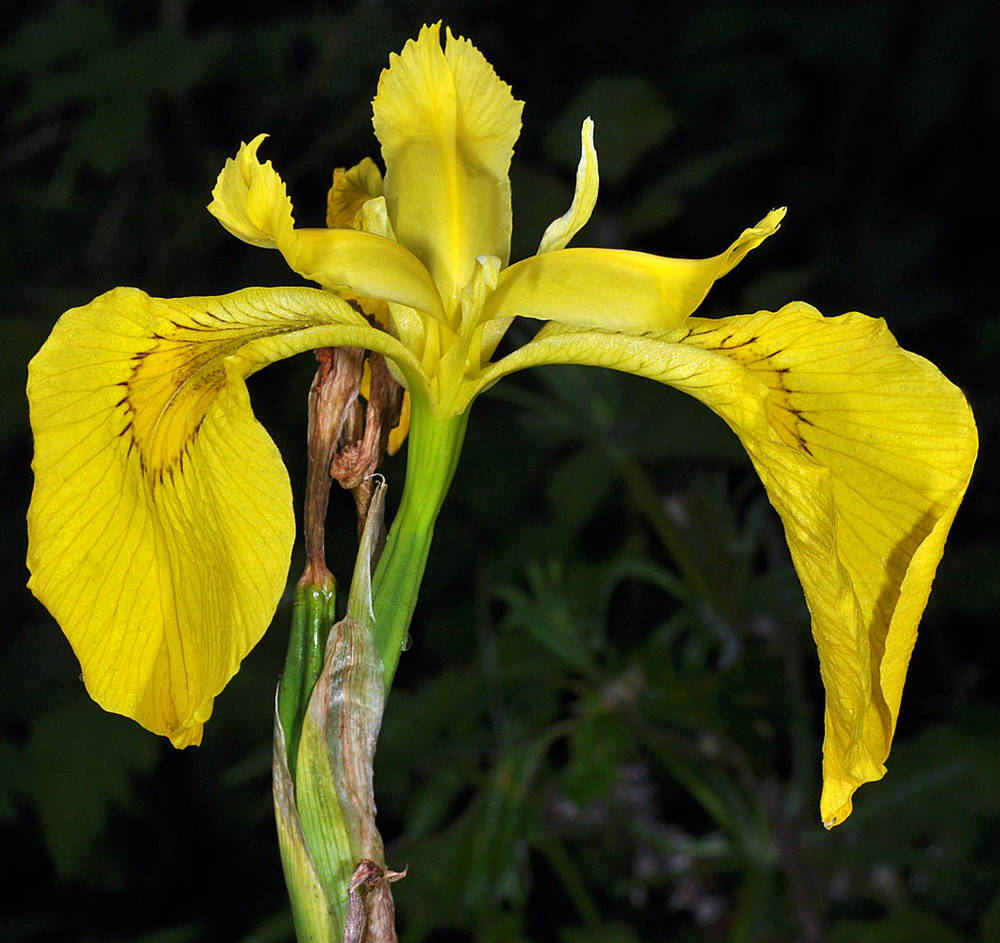Iris pseudacorus
Iris purdyi
yellow flag, yellow water iris
fleshy;
rhizomes pink, freely branching, producing extensive clumps with remains of old leaves.
usually 1-branched.
deciduous; stiff; erect at first then recurved;
blades dark green with prominent median thickening, 20–30 mm wide;
cauline leaves equal in height to inflorescence.
4–12-flowered;
bracts subequal, green with brown margins; outer bract strongly keeled.
perianth bright yellow or cream; signal a darker yellow basal patch delimited by short, brown lines;
petals without veining;
tube 12–13 mm;
stigmas rounded with prominent tongue.
angled, with obvious groove at each angle.
D-shaped, flattened; corky, lustrous.
=24, 30, 32, 34.
Iris pseudacorus
Iris purdyi
Swamps, wet shores of rivers and lakes, irrigation ditches. Flowering May–Jun. 0–1000 m. BW, CR, Est, Lava, WV. CA, ID, NV, WA; throughout North America; northern Africa, Eurasia. Exotic.
A native to Eurasia and Africa, this taxon is considered invasive in Oregon.
Ann Willyard
- Local floras:
BC,
CA,
OR,
WA
- Local Web sites:
CalFlora,
CalPhotos,
Flora NW,
PNW Herbaria,
Turner Photog.
WildflowerSearch
iNaturalist (observations)
USDA Plants Database
- LBJ Wildflower Center
- SEINet
- Plants of the World Online
- Encyclopedia of Life
- Wikipedia
- Google Image Search



